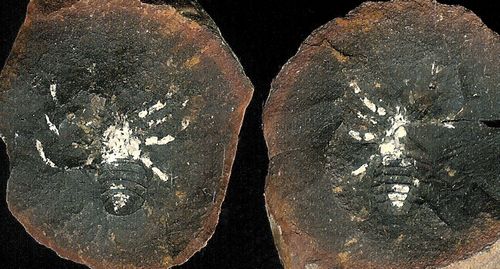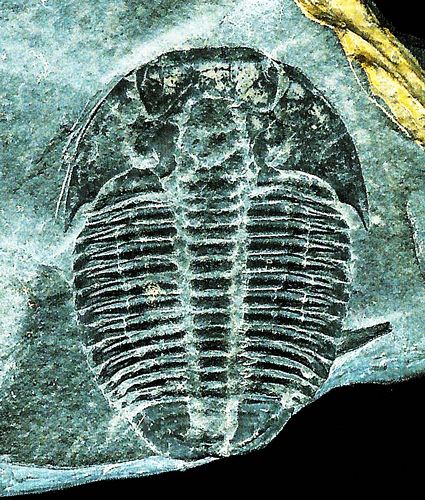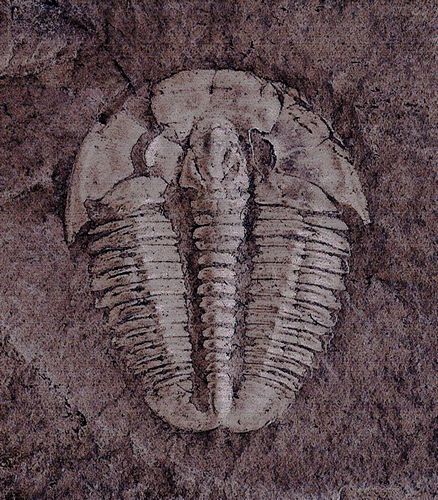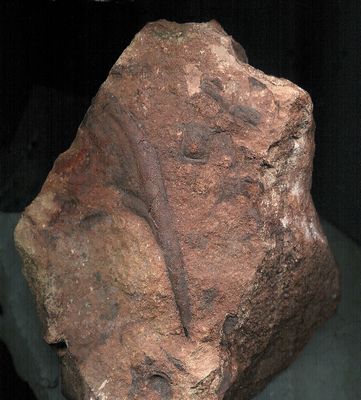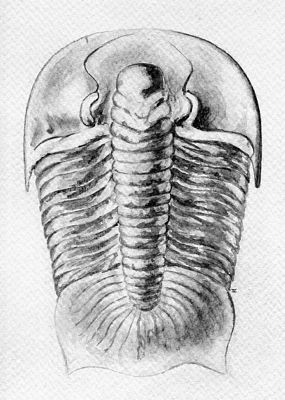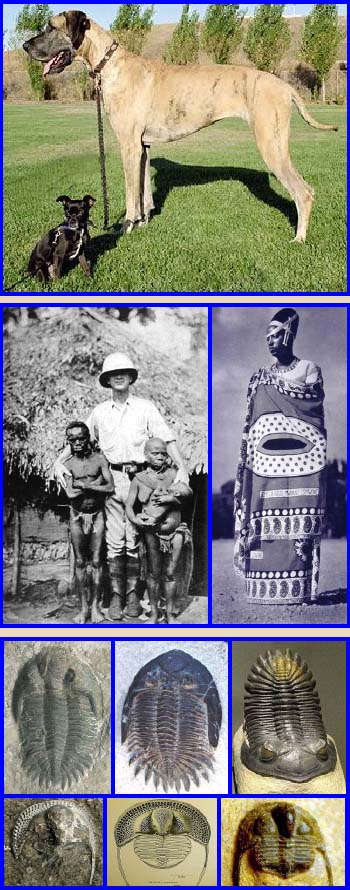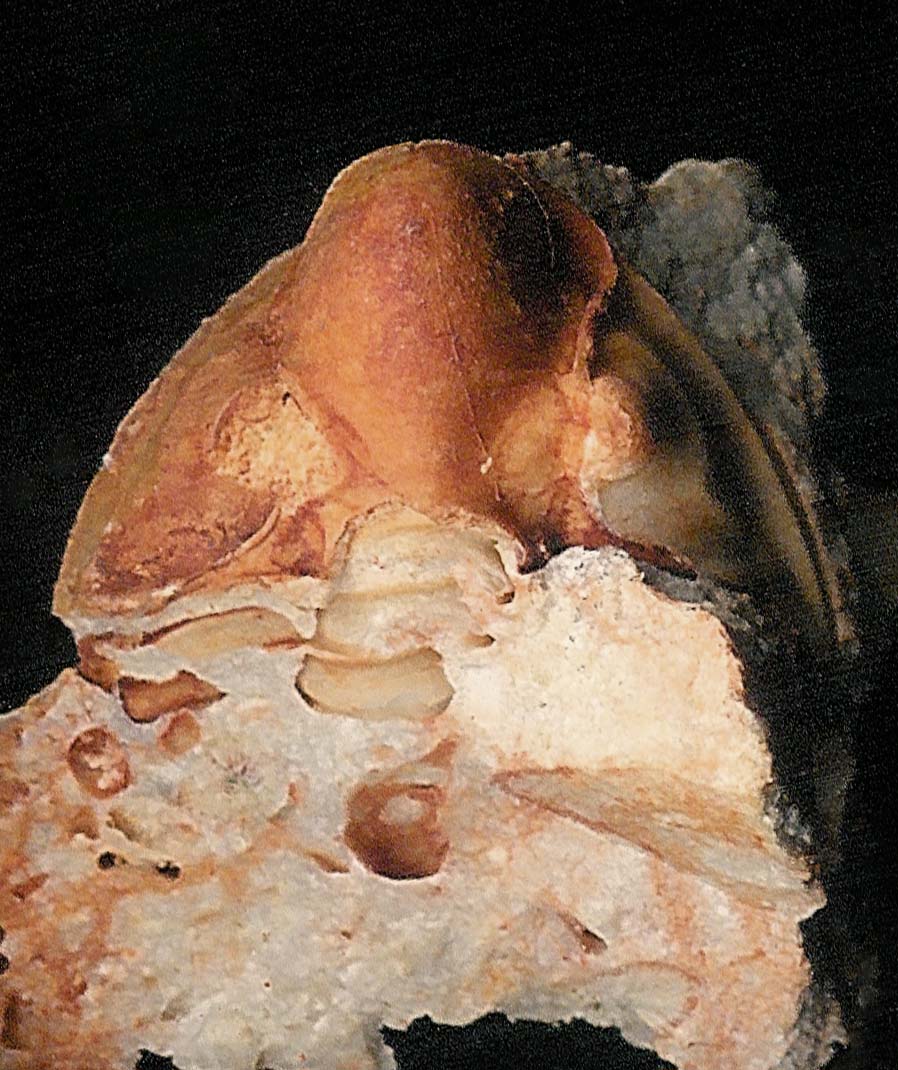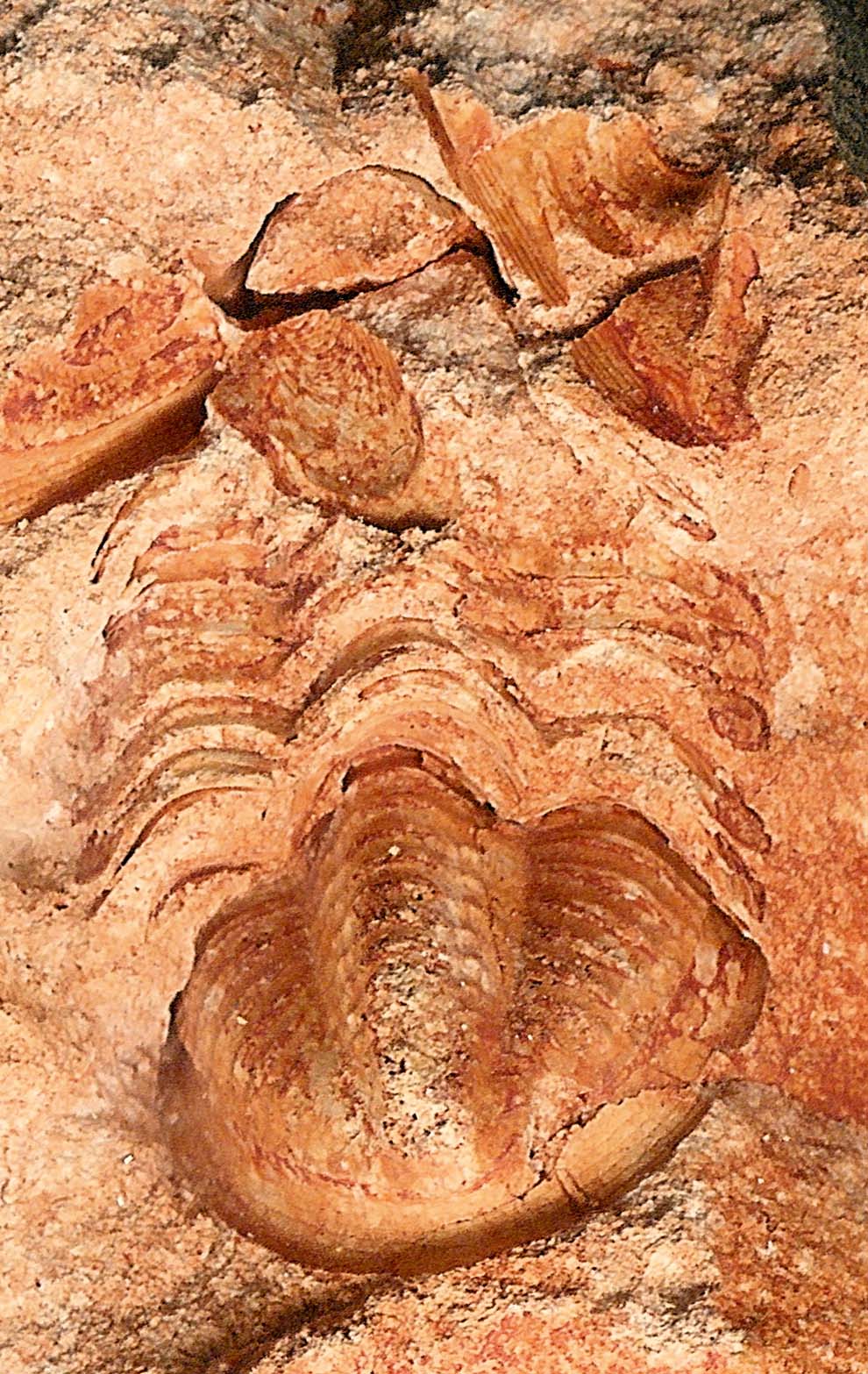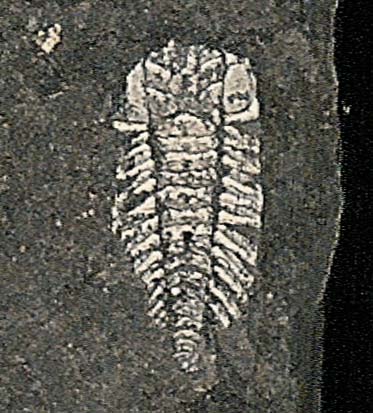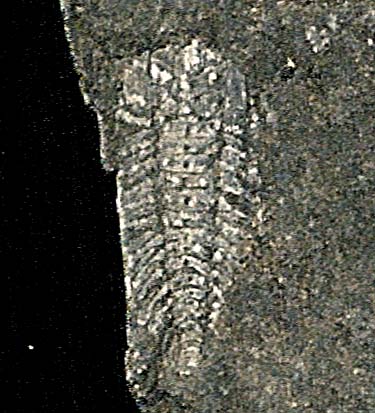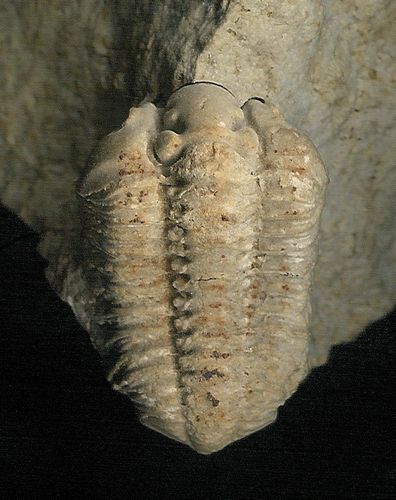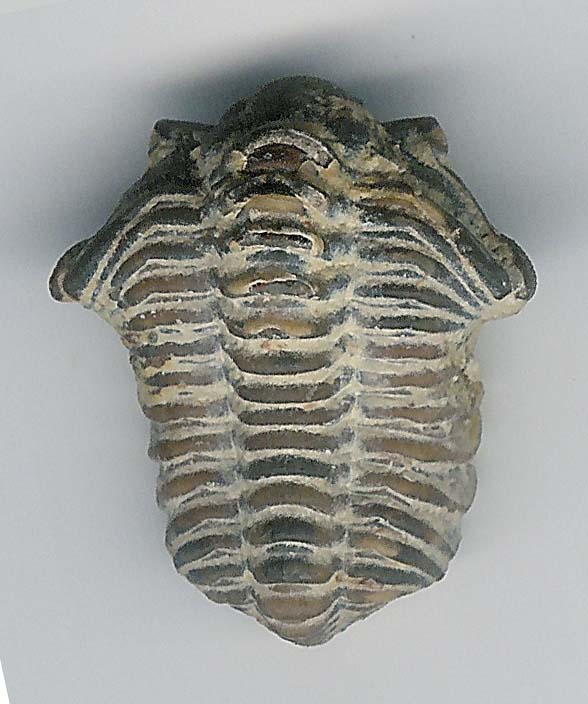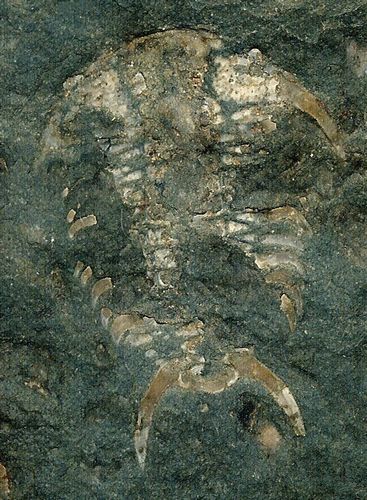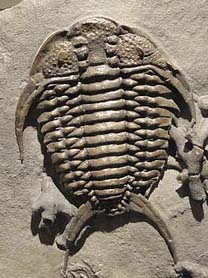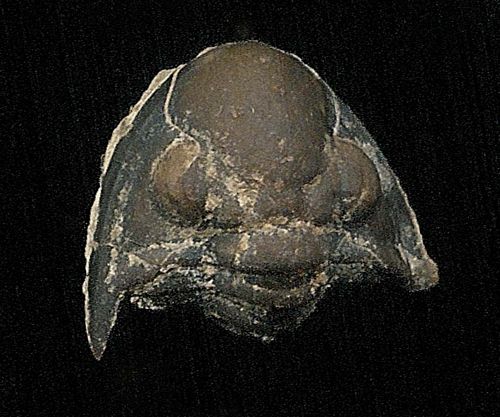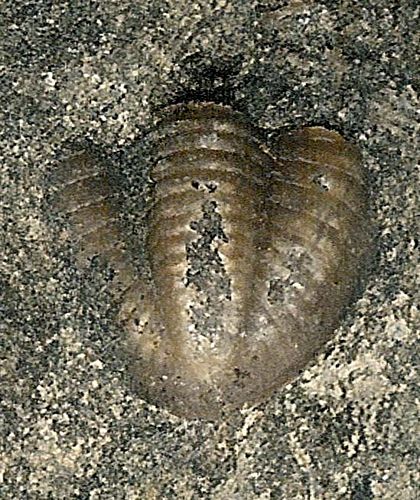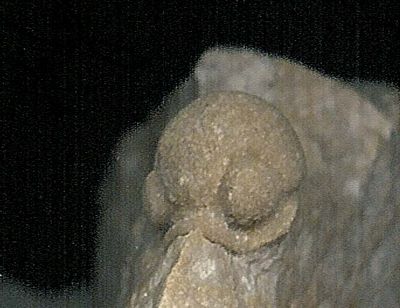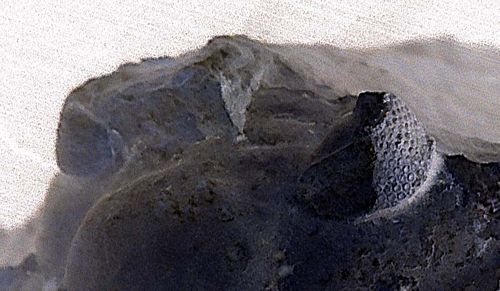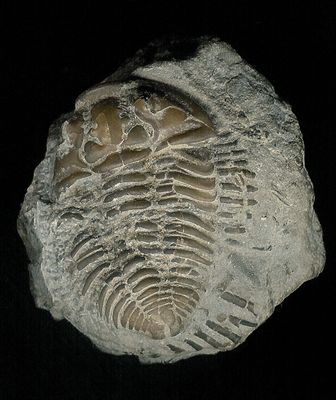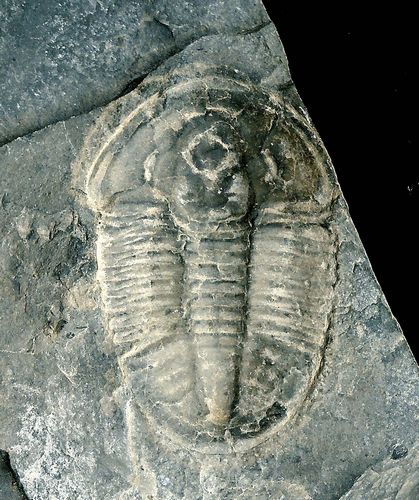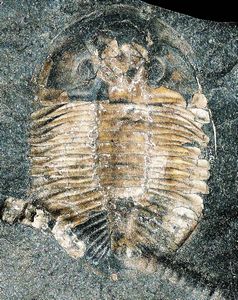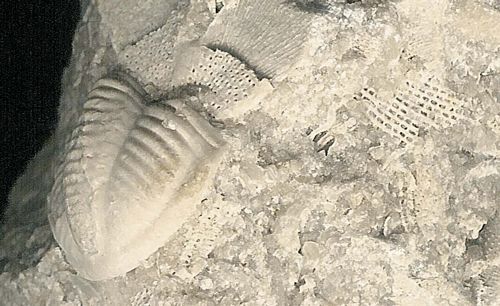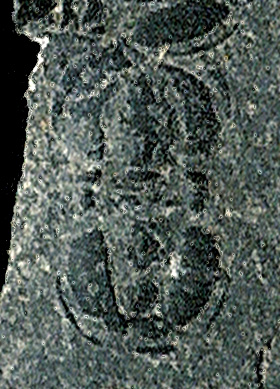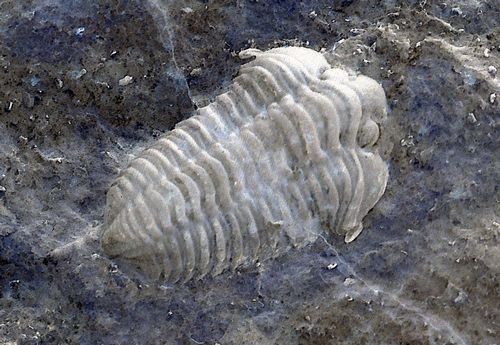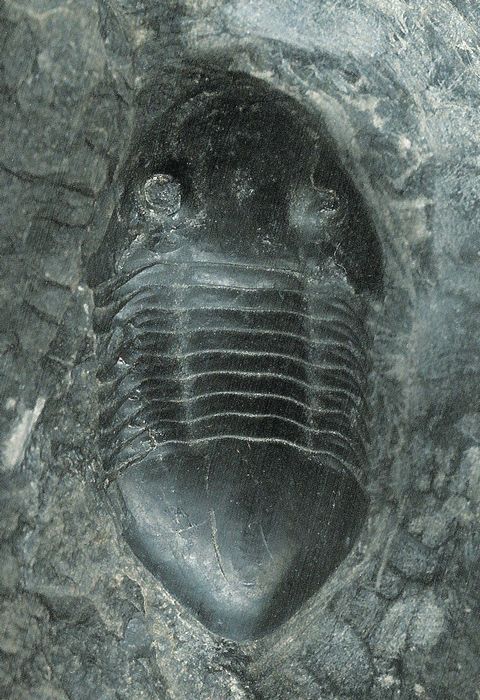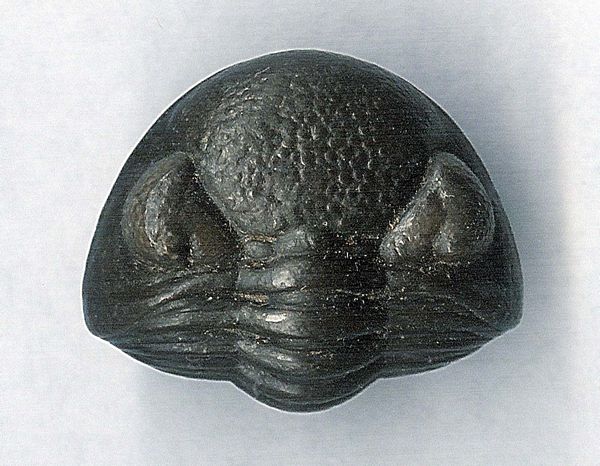
Fig. 1. The 100-yrs famous trilobite, Phacops rana (coiled specimen; Devonian; Medusa Quarry, Lucas Co., OH), now changed to Eldredgeops (!) for reason of evolutionary “theory.” Niles Eldredge himself knew that the trilobite record did not support Darwinian evolution. Eldredge and Gould’s resulting punctuated equilibrium is a scientific error of equal magnitude. There are many trilobite genera but Eldredge knew they each remained the same throughout their tenure.
The date ranges in this article are from Fossilworks: Gateway to the Paleobiology Database, Macquarie Univ. Dept. of Biological Sciences, Sydney,
Australia—assembled by hundreds of paleontologists internationally; Sam
Gonn III's superb site, trilobites.info/index.htm. Honolulu; and many
other sources.
|
“So where did trilobites come from? …The evidence is neither clear nor unambiguous.”
-Sam Gonn III, PhD, biologist; trilobite authority, and webmaster of the comprehensive resource trilobites.info
Trilobites are extinct undersea arthropods that are one of the most successful and diversified animal groups of all time. (See the author’s fossils in Figs. 1-7, each recovered direct from formations across the U.S. and Ontario, Canada, over a 30-yr span.) Dr. Gonn’s statement about the mysterious origins of trilobites should have a familiar ring to it. As pointed out earlier, this is the same observation made of all organisms. But the public doesn’t know it because it is routine in the evolution community to admit “problematic evolution” for the organism at hand while implying that other organisms have been figured out in evolutionary terms. They haven’t. Proof of evolution has not been established for a single group—not one species, not one genus, not one family, order, class, phylum, or any other category. Trilobites
represent a single plan with thousands of variations, and the same is
true for all other subgroups of the phylum arthropoda (Fig. 2). The first insects? Insects. The first (continued on page 13) |
Fig. 2.
A few examples of “thousands” of living fossils—classes, orders, families, genera (presently arthropods), showing no evolution over hundreds of millions of years.
|
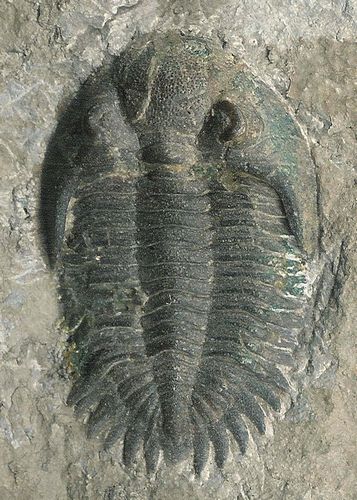
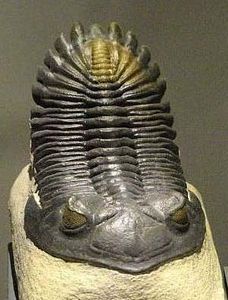
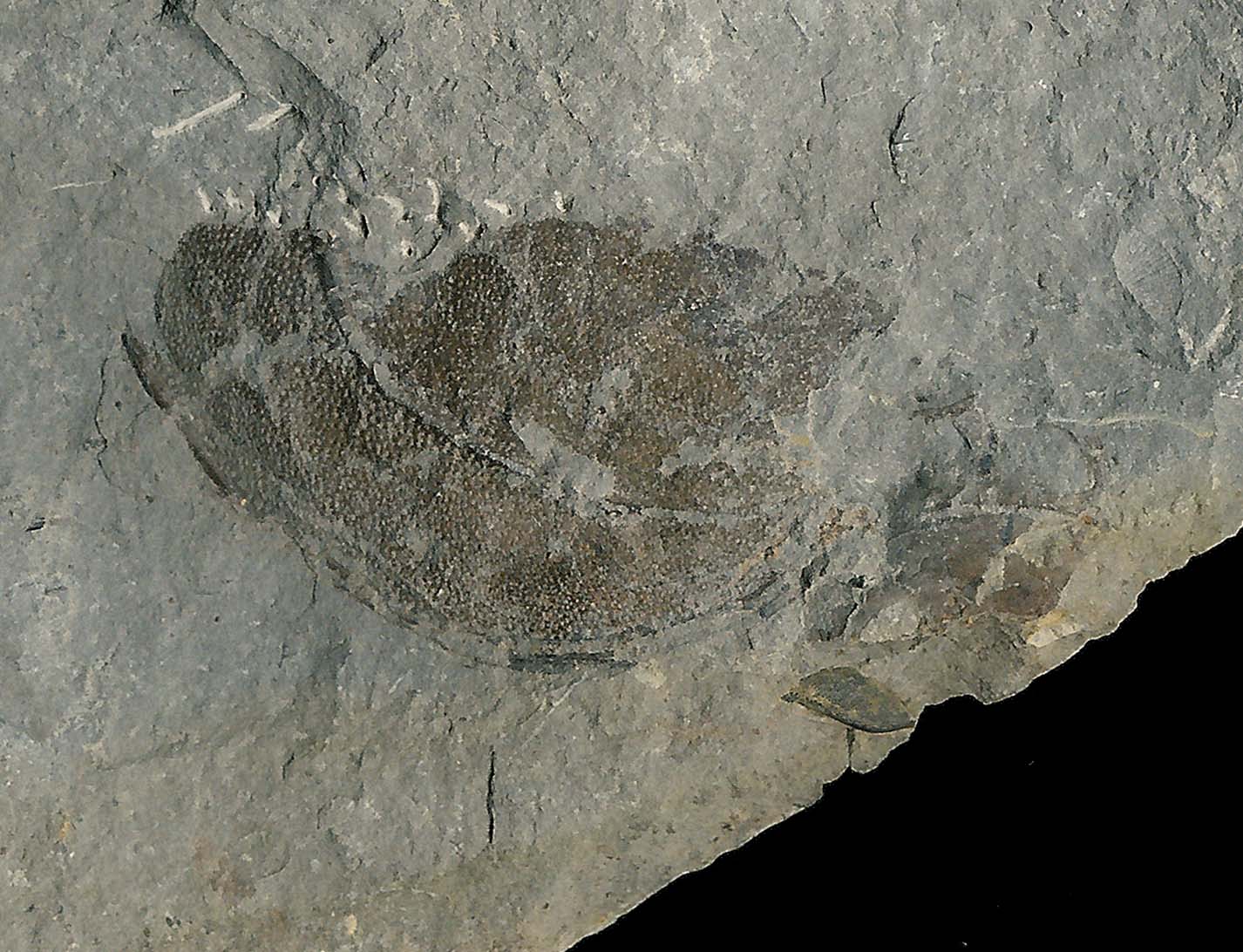
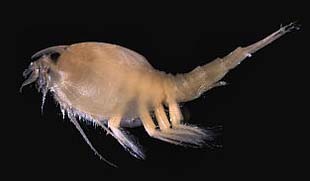
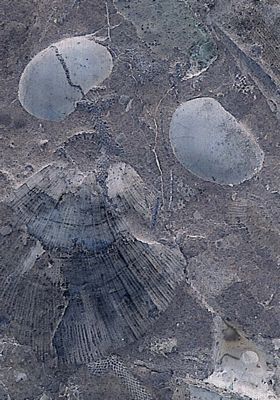
![383px-CypridinaMediterranea[Wikipedia]grayscale-crop.png](images/383px-CypridinaMediterranea%5BWikipedia%5Dgrayscale-crop.png)
